Exploring the secrets of Modica is a journey inside the history of Sicilian art and culture. Like the towns of the Val di Noto, this town in the province of Ragusa also suffered great damage in the devastating earthquake that struck the entire region in 1693. The rebirth after such a tragic event meant that, in Modica as in many neighboring cities and towns, a unique taste and architecture developed, giving birth to the late Sicilian Baroque that is now part of the UNESCO World Heritage Site. Visiting the historic center of Modica is an experience absolutely to be had with one’s nose to the sky to lose oneself among the thousands of large and small masterpieces that the mastery of artists and artisans have carved on the facades of churches and palaces. Unmissable then also in Modica are the temptations for lovers of good food, and here the great protagonist is above all chocolate, which, produced with a special cold processing and known for its resulting grainy texture, can be enjoyed in a wide variety of sweets. Here are 10 must-see places to discover in Modica.
With its imposing tower and grand staircase, the Cathedral of San Giorgio is probably the world’s best-known symbol of Sicilian Baroque. Rebuilt after the earthquake at the end of the 17th century, the Duomo di San Giorgio is a treasure chest of stucco and decorations among which it is easy to get lost. Set in the beating heart of Modica, the Cathedral of San Giorgio is one of the centers of the city’s social and cultural life and has also been for centuries a true open-air workshop for artists and craftsmen. The famous facade, the design of which dates back to the mid-18th century, was not completed until 1848, while the imposing staircase is still later as are some of the interior decorations that were completed as late as the early 20th century.
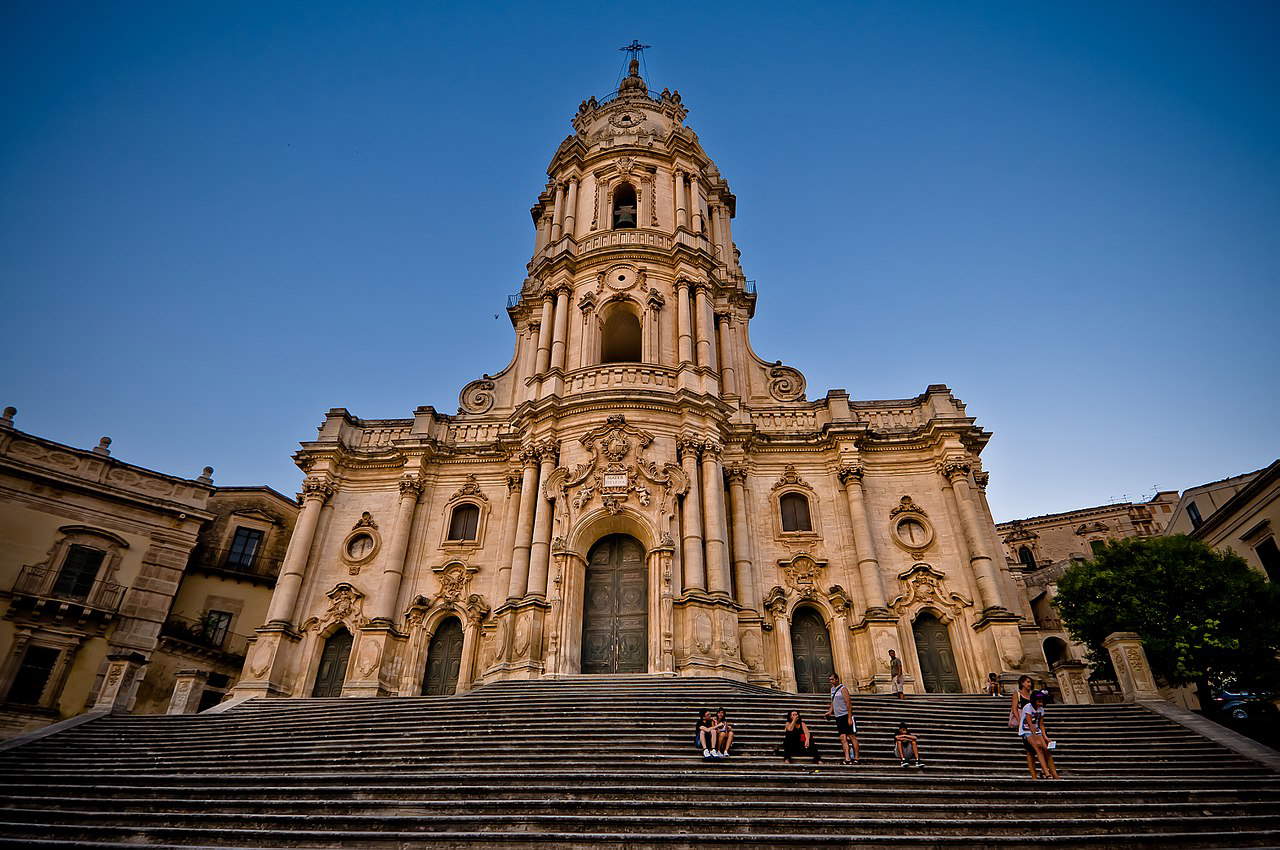
Like the Cathedral of St. George, the one dedicated to St. Peter is one of the symbols not only of Modica, but of European Baroque. It is located in the heart of the lower town, and its sober façade stands out amid the magnificence of convents and aristocratic palaces that line the streets and squares. One only has to step through the large entrance door to be confronted with an environment where pomp and attention to the smallest detail are the great protagonists. Inside, St. Peter’s Cathedral is a triumph of stucco, sculptures and frescoes depicting scenes from the Old and New Testaments. Also of great value is the statue of the Madonna of Trapani, a marble work dating to the 16th century that is located in the right chapel.
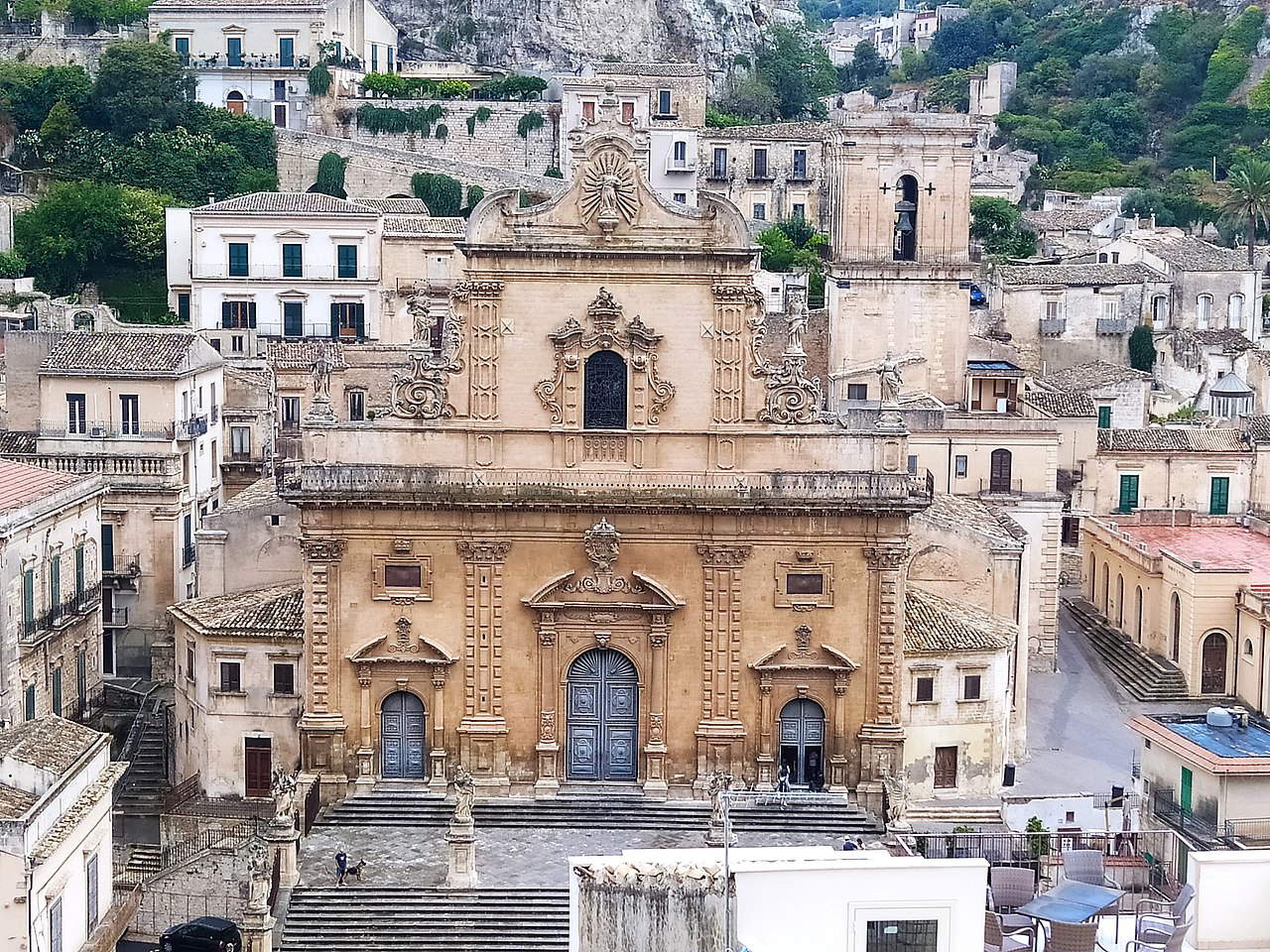
It is one of the jewels of Corso Umberto, the main artery of Modica Bassa, and is above all one of the few remaining vestiges of the city before the 1693 earthquake on a par with the nearby convent of Santa Maria del Gesù. There are numerous points of interest in the Church of the Carmine, which houses numerous works of great value, beginning with the altarpiece of St. Albert as well as the sculptural group of the Annunciation, a work attributed to the great Antonello Gagini. On the facade, which is very clean and linear, one can instead admire a beautiful portal dating from the end of the 14th century topped by a Franciscan rose window with twelve rays. This is surely one of the most intact and valuable rosettes in all of Sicily, while to the left of the facade is the large bell tower.
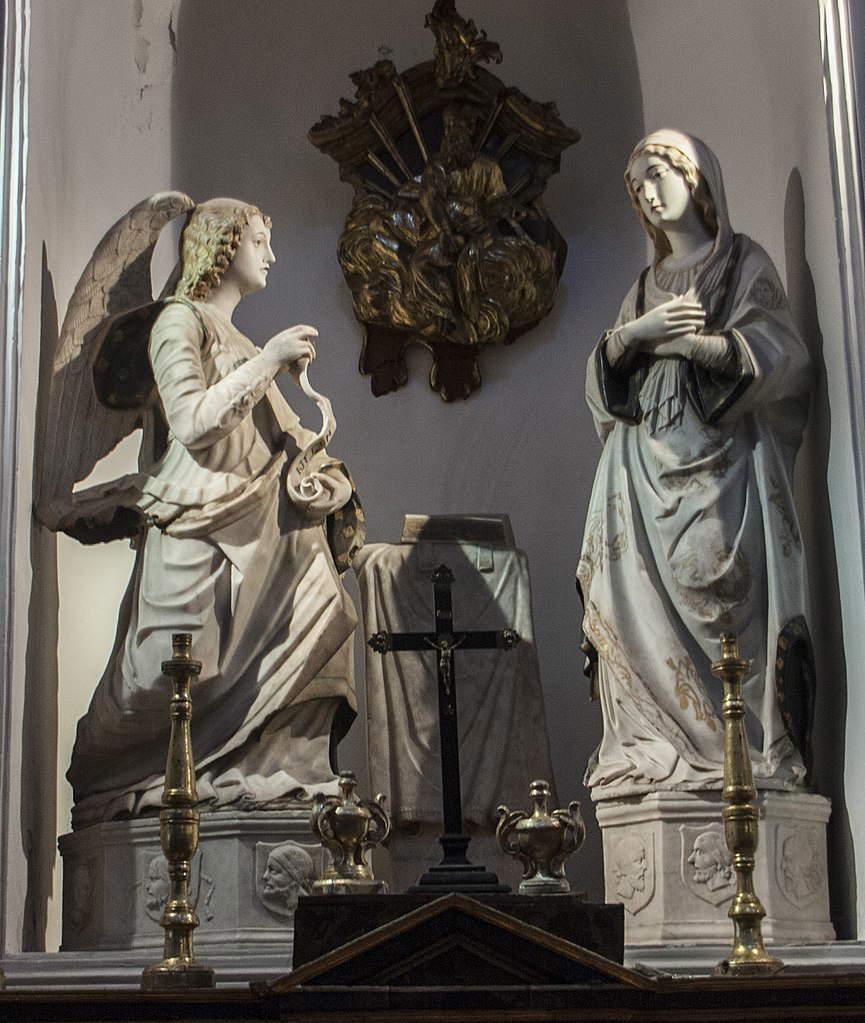
A place of worship among the dearest to all the inhabitants of Modica, the sanctuary of Santa Maria delle Grazie was built after, on May 4, 1615, on the coast of the Monserrato hill, in a burning boxwood bush, it was found. miraculously intact, the sacred image of the Madonna and Child, painted on a slate table. Hence the decision to erect the shrine, which soon became one of the symbols of the town whose inhabitants personally contributed to the construction of the imposing building, which dates back to the early 18th century. Today, the miraculous slate tablet sits within a gilded frame and is placed in the monumental pyramidal altar inside the church, while Our Lady of Grace is the patron saint of Modica.
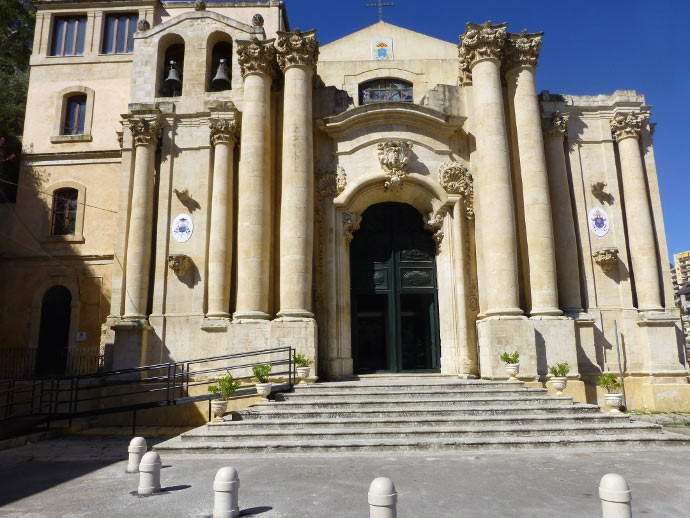
Its neoclassical facade dates from the late 19th century and is certainly a departure from the more properly Baroque taste of many other palaces and buildings of worship in Modica. However, this outward appearance should not deceive since, according to some sources, the church dedicated to St. John the Evangelist was the first religious building in the city. Very beautiful is the grand staircase leading to the entrance of the church, bordered on either side by 26 pillars that once supported as many statues. Unmistakable then is the cross that surmounts the spire of the church and represents the highest point in all of Modica. Also very rich is the interior with its thousands of stuccoes that provide an evocative setting for paintings and sculptures, among which the group of Our Lady of Sorrows dating from 1500 stands out.
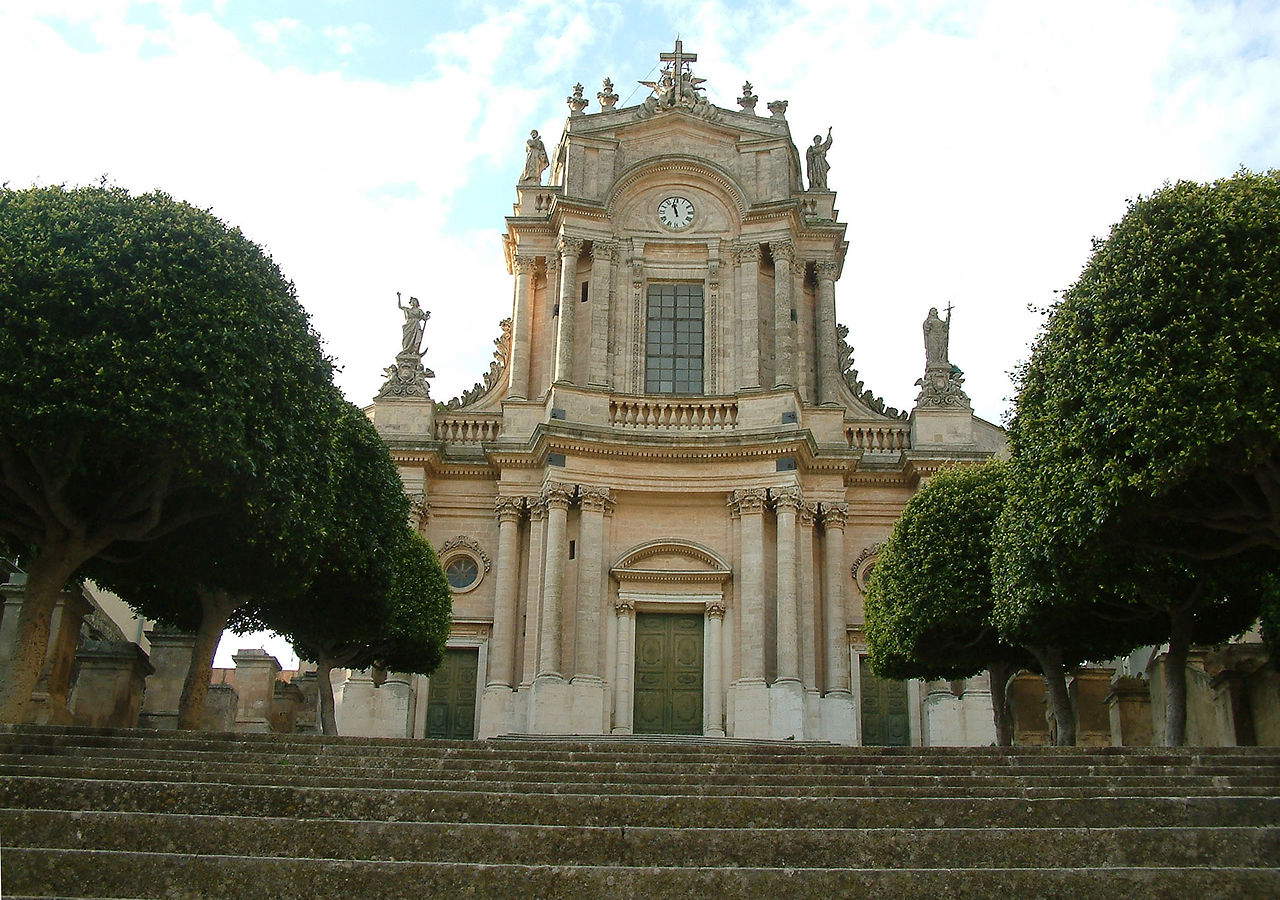
Paleontology, archaeology, medieval artifacts and then again historical collections of old books, Risorgimento weapons, the Quasimodo archive and the section dedicated to local artist Enzo Assenza. The Franco Libero Belgiorno Civic Museum in Modica is a precious container of many treasures that, each in its own way, tell the rich and eclectic history of the area. Among the most valuable artifacts preserved here is surely the Heracles of Capheus, a bronze statuette dated to the end of the 3rd century B.C. depicting the hero after his first effort. Of great value, however, is also the collection of artifacts ranging from prehistoric to medieval times as well as the section dedicated to the Sicilian Nobel laureate, which collects not only the works and some portraits of the poet, made by artist friends such as Enrico Baj, Renato Guttuso, Giacomo Manzù, Pino Ponti and even, Eugenio Montale, but also a photographic section dedicated to Quasimodo and his family as well as autograph writings.
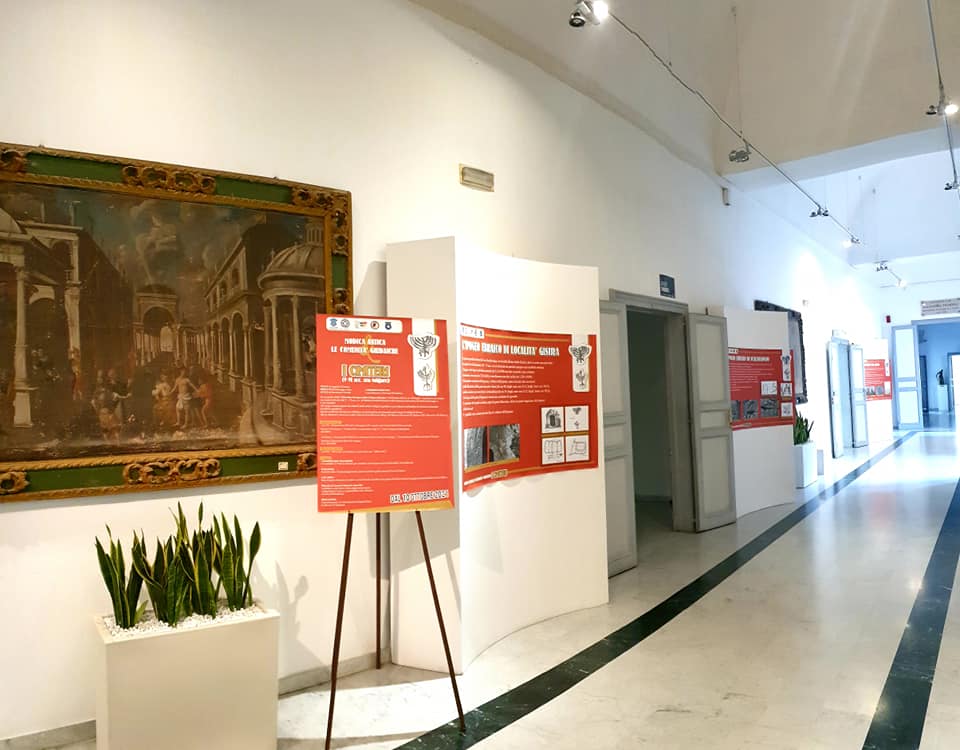
Also known in the city as the Church of the Rosary, it is, along with the nearby Dominican convent, one of the few buildings left intact from the earthquake at the end of the 17th century. Inside it preserves a rich collection of 16th-century paintings and a small chapel richly decorated with stucco and wall paintings. The convent, on the other hand, has been home to the town hall since the late 19th century. Here, in the atrium, one can visit an underground crypt that preserves wall paintings with skulls surmounted by symbols of temporal power and a fresco that dates back to the 18th century. There is also an ossuary that preserves the remains of monks and a drainer for preparing bodies for burial.
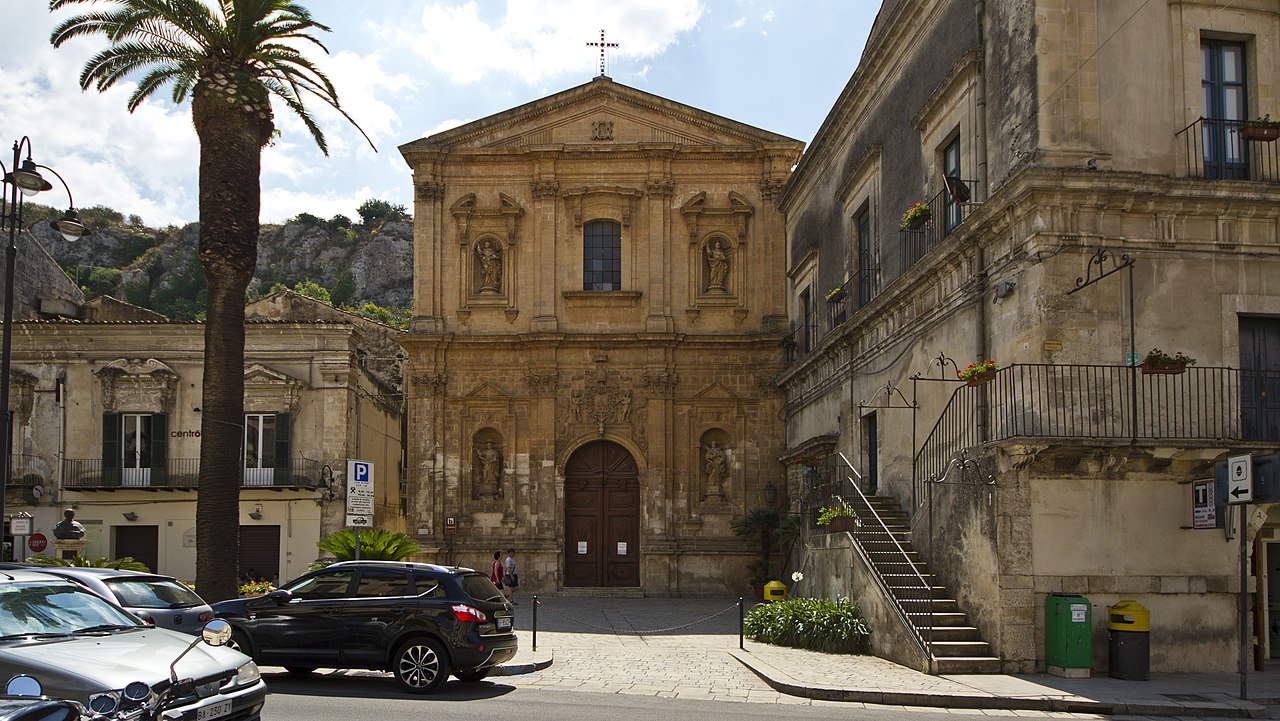
With its unmistakable profile, it is the symbol of the city. It sits atop a high rocky outcrop and is easily observed from miles away. Of very ancient origin, the Castle of the Counts, as it stands today, is the result of a massive reconstruction that affected it not only after it was damaged by the earthquake of 1693, but also after it was completely rethought at the end of the 18th century, following the canons of the time. It was then that the castle ended up occupying the entire northern area of the fortress. Today a polygonal tower dating from the 14th century remains, while in the inner courtyard the prisons can be visited in addition to the churches of the Madonna del Medagliere le what remains of the church of San Cataldo.

Built on Corso San Giorgio, next to the Cathedral of San Giorgio, this 18th-century palace is famous for its Baroque facade is preceded by a flight of steps that gives it great scenic impact. On the pediment, in the center, the family coat of arms stands out, while one of its peculiarities is that it has two main elevations: the first, which allows access to the interior of the mansion, is more dim and hidden; the other, which towers over Modica with its monumental balcony about 20 meters long, from which one can enjoy probably the most striking view of the entire historic center.

In the mere 45 square meters of this small church one breathes the long passage of centuries. Discovered only in 1987 by Modican scholar Duccio Belgiorno in a cave used as a clearing room, the rock church of San Nicolò has an apse completely covered with icons at the center of which stands out the Christ Pantocrator enclosed in a large mandorla and surrounded by angels. During further excavation work, moreover, several as yet unexplored tombs came to light. This rock church is considered by scholars to be one of the best-preserved examples of Byzantine architecture on the island.

 |
| Modica, what to see: 10 places in the baroque city |
Warning: the translation into English of the original Italian article was created using automatic tools. We undertake to review all articles, but we do not guarantee the total absence of inaccuracies in the translation due to the program. You can find the original by clicking on the ITA button. If you find any mistake,please contact us.